João Félix has started the season in an impressive form.
After an inconsistent 2019/20 season in which we could only see glimpses of his immense quality, the Portuguese forward is the joint top goalscorer in La Liga with five goals in seven appearances.
He has also scored twice in three matches in the UEFA Champions League and is only two goals away from equaling his total figures last season.
In this tactical analysis, we’ll analyze Félix’s unique playing style, what he brings to Atlético Madrid’s tactics, and why he was chosen to replace Antonie Griezmann after he left for Barcelona in 2019.
João Félix Player overview
On paper, Félix is a striker, usually forming an attacking partnership with Luis Suárez at Atlético Madrid.
But he doesn’t really act as a classical number nine on the pitch.
Félix likes to move around all the left zone of his team’s attack.
He certainly gets closer to central positions as the ball gets closer to the goal, but he likes to come deep to play in midfield, receive close to the left touchline, and move between the lines.
His technique is excellent, and he feels comfortable in any situation.
From a physical point of view, Félix is good but not outstanding.
He’s of average height (181cm / 5’11’’) and slim-built.
He’s agile and well-coordinated, meaning his pace is good in long spaces, but he is also capable of moving quickly and accurately in tight pockets of space.
Even if he’s not a strong player, he knows how to use his body and can shield the ball effectively.
We can see this in his heatmap below.
Félix likes to come deep to get the ball, even into his own half and appears everywhere on the left side, both close to the touchline and in the half-space.
He’s also present in and around the box and becomes more central when he advances. We could consider Félix more of a left-attacking midfielder with an eye for goal than a proper striker.
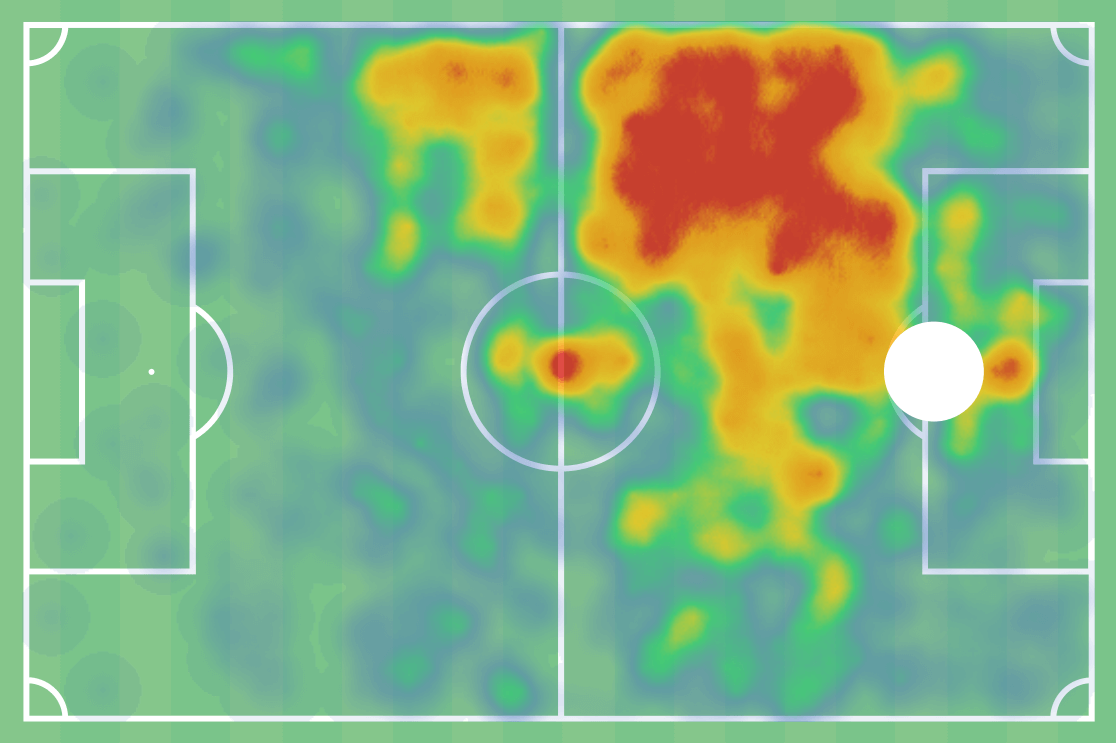
Using Total Football Analysis’ xGold, we found that, according to stats, Iago Aspas, Joaquín Correa, and Roberto Firmino are among the most similar players to Félix in the top five leagues.
This gives us a good starting idea of Félix’s playing style.
They are all very mobile forwards who like/can play wide, with the quality to create for others in addition to being a goal threat.
João Félix Style Of Play – Attacking positioning and mobility
As we have seen in the previous section of this tactical analysis, Félix is a very mobile player.
He can appear anywhere in the opposition half, helping his team progress and create.
He reads the game well and chooses the best option for providing width, playing between the lines, or getting into the box, depending on his team’s needs.
In the following screenshot, we can see Félix’s usual starting position in Atlético Madrid’s attacks.
He tries to position himself in the middle of the rectangle formed by the right-back, the right centre-back, the right central midfielder, and the right midfielder.
From that position, he can reach different parts of the pitch, combine with his teammates around him, and be close to the box.
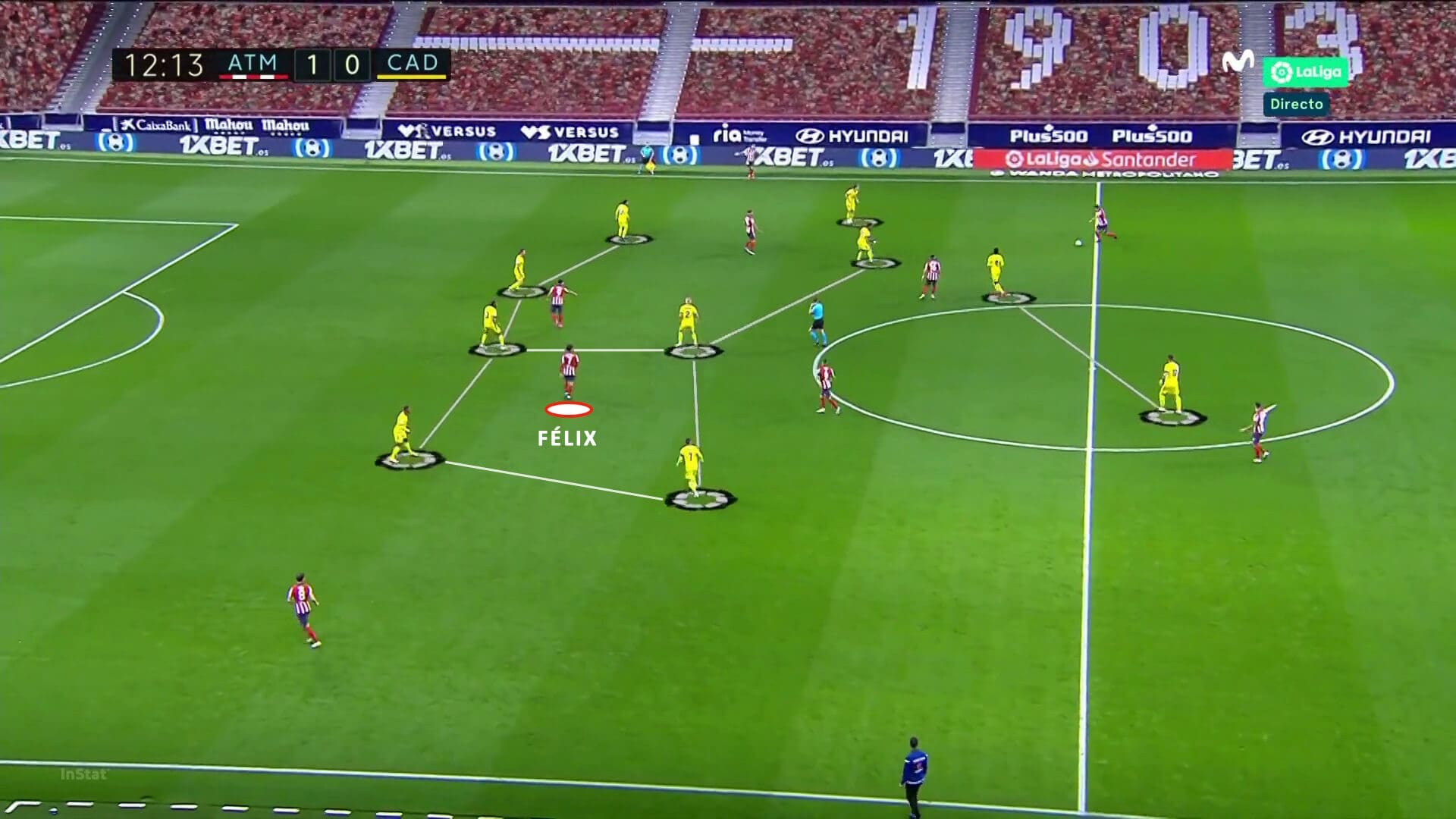
If we look at his stats, we clearly see how involved Félix is in the game.
He makes 40.67 passes per 90 (top 9 between La Liga attackers) with an accuracy of 85.22%.
While on the ball, he’s not afraid of taking risks and gets involved in 12.02 offensive duels per 90 (20th-most between La Liga attackers), winning 44.12% of them and attempting 4.95 dribbles per 90 (22nd most between La Liga forwards), completing 57.14% of them.
These numbers are more in the region of players like Marco Asensio, a wide playmaker, than in the area of a classical striker.
But despite his mobility, Félix usually wants the ball to his feet.
He doesn’t usually make runs in behind, leaving that duty to his attacking partner.
In the attacking phase, he prefers short and intense efforts rather than long off-the-ball runs, especially to pass and move to receive the ball back.
He does make some runs in behind, but usually after passing the ball to a teammate and looking to receive the ball again.
If not, he prefers to arrive in the box in a second wave and take advantage of the spaces created by his teammates.
Below, we can see an example of Félix preferring to support his teammate than making a run in behind.
His teammate recovers the ball on the right wing, and Félix, instead of making a run in behind to try to create a quick counter, prefers to get closer to his teammate and receive to his feet.
It’s the other striker who makes the long run in behind.
Usually, strikers try to receive the ball as close to the goal as possible, but Félix isn’t an average striker and tends to create for others rather than being at the end of his team’s attacks.
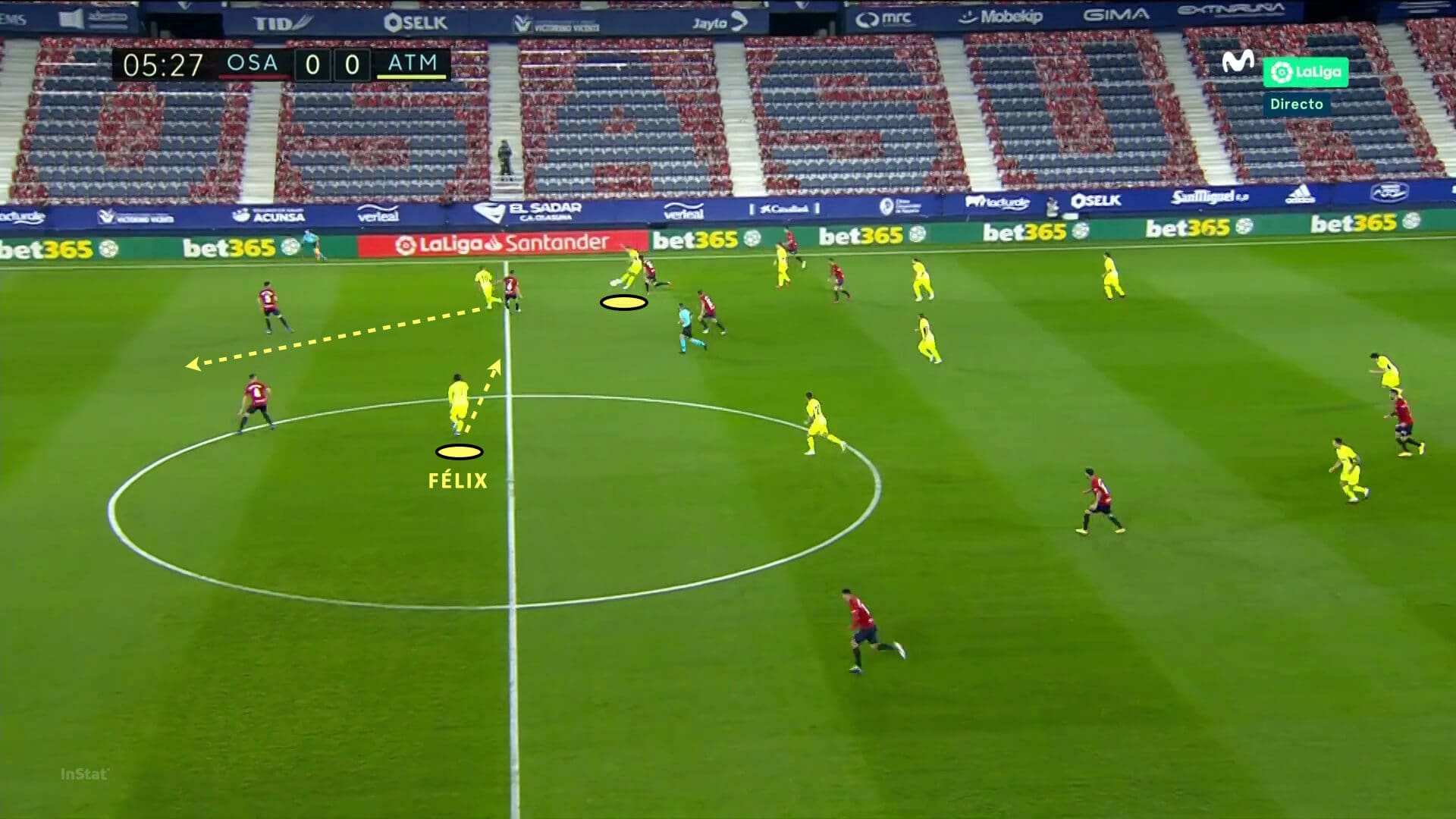
Because of the above reasons, Félix needs an attacking partner and wouldn’t be as effective playing as the lone striker.
When playing with Portugal, he has Cristiano Ronaldo as the focus of the attacks and he can move around him to assist him and to take advantage of his ability to play with his back to the goal.
At Atlético Madrid, Suárez is the central striker, making runs in behind, holding the ball, and pivoting for Félix to roam freely around the attacking third.
He likes to start the attacks from the left and advance with short, quick combinations while running diagonally towards the goal.
He has the ability to control the ball while running and is very effective when he finds partners who can give the ball back and play one-twos in tight spaces.
In this example, Félix has the ball at the left corner of the box.
He sees his teammate facing him inside around the penalty spot and plays a pass between two rivals with the outside of his right foot.
Right after making the pass, Félix makes a run to a more central position to receive the ball back in a dangerous position and finishes the play with a shot.
With a striker like Suárez in front of him, Félix can make the most out of these quick combinations and diagonal runs.
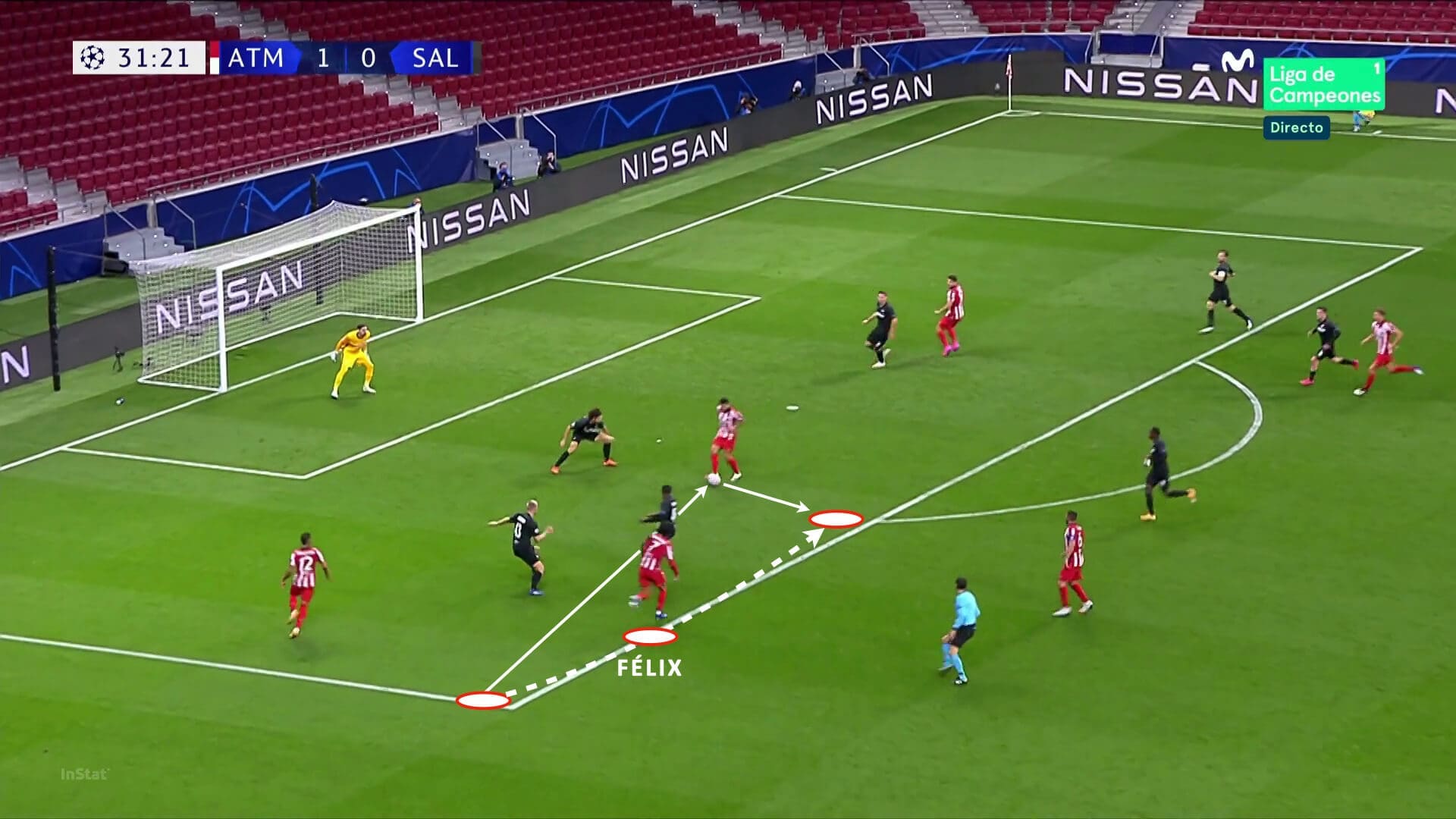
As he approaches the box, Félix usually slows down his runs to create space and arrives in a second wave.
This is one reason why he needs a striker to attack the spaces inside the box and midfielders who can crowd the box and drag the defenders.
He’s brilliant and times his runs very well, often appearing unmarked and ready to receive the ball in a dangerous situation.
Even if his presence in the box is not high for a striker – just 3.18 touches in the box/90 this season, 45th most between La Liga attacking players – he’s still a goal threat and has 3.01 shots per 90 in the league so far.
We’ll see some examples of how Félix gets his opportunities in the pictures below.
In the first example below, we see his positioning in a counterattack.
Counterattacks are one of the main threats of Atlético Madrid’s tactics, and Félix interprets them very effectively, as we’ll see in the next section of this scout report.This time, it’s his teammate Ángel Correa who makes the first run in behind and receives the deep pass.
Félix starts his run later and has space and time to arrive unmarked inside the box.
He receives the ball and scores with an excellent finish.
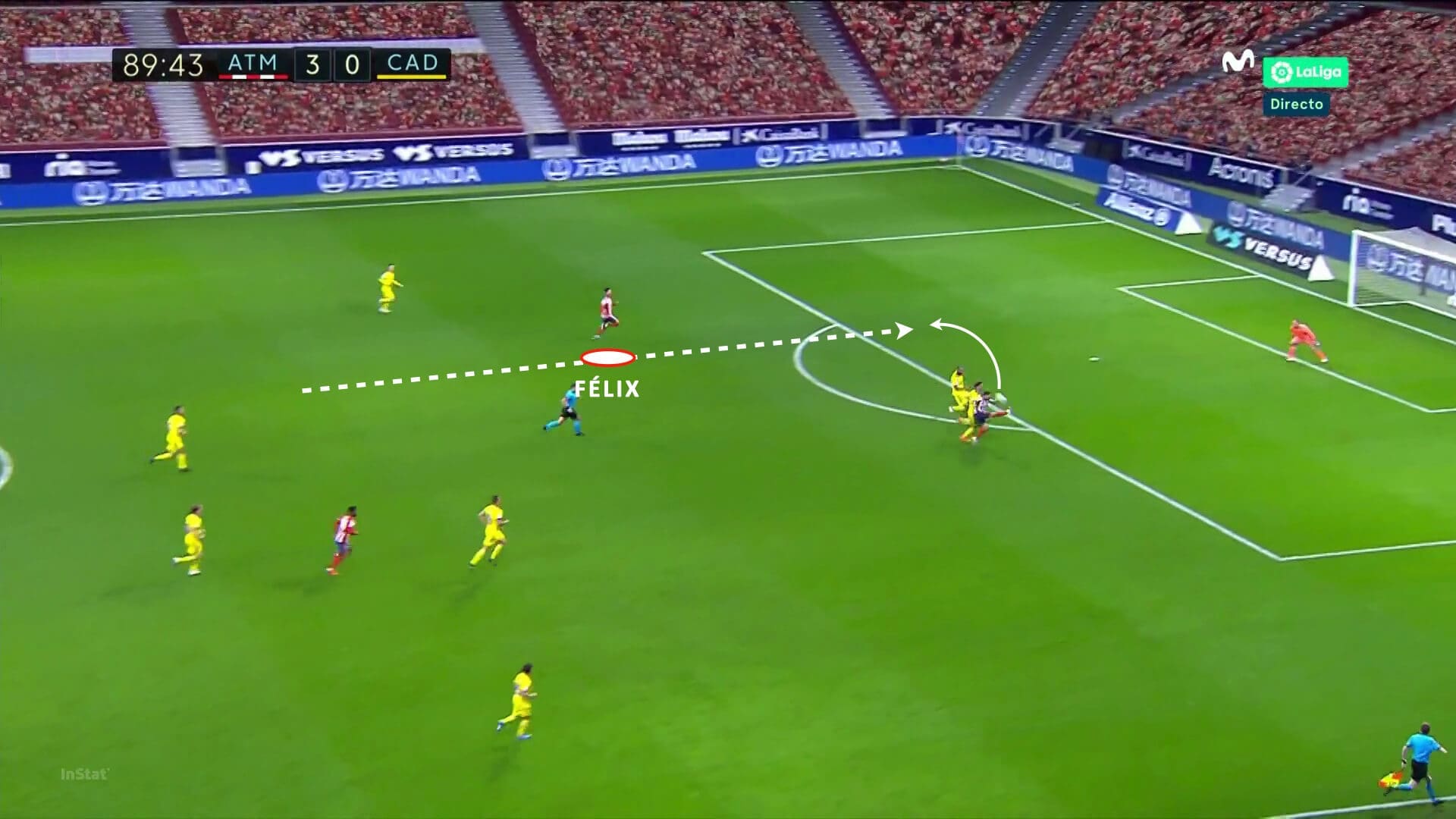
In the following two examples, we’ll see how Félix creates spaces by slowing down his runs.
In the first one below, the play comes from the right side.
Two Atlético players attack the box and drag Osasuna defenders with them.
Seeing this, Félx slows down his run from the opposite side and generates space in front of him to receive the pass and face the goalkeeper with plenty of time to finish.
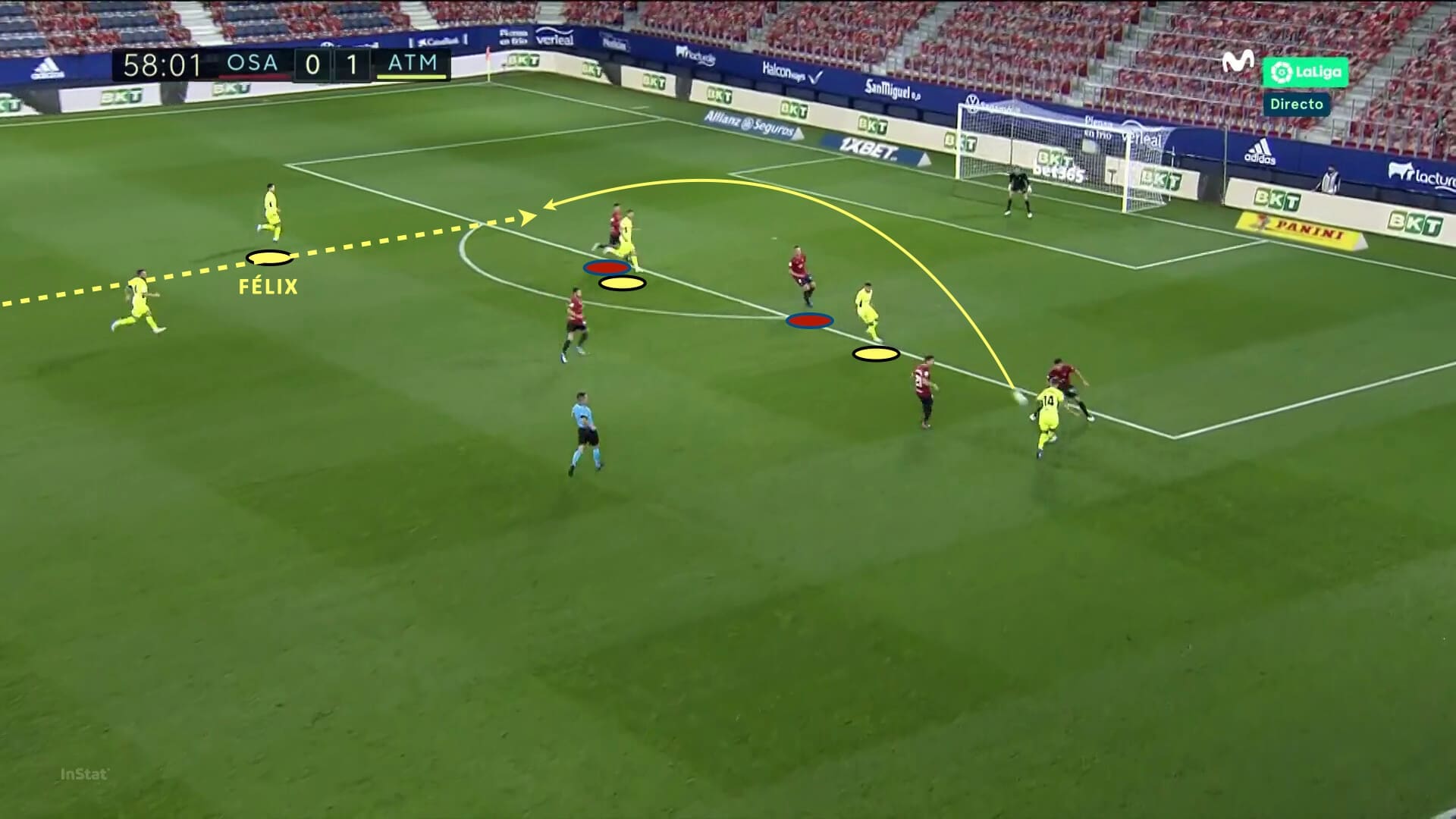
In this second one, Atlético crosses from the left wing, and the defender makes a bad clearance.
Félix, who wasn’t in the box for the first cross, arrives at the edge of the box and takes advantage of the bad clearance with a perfect shot into the top corner.
At the moment of the first cross, there were three players inside the box looking to receive the ball, attracting defenders and creating the space for Félix’s late run.
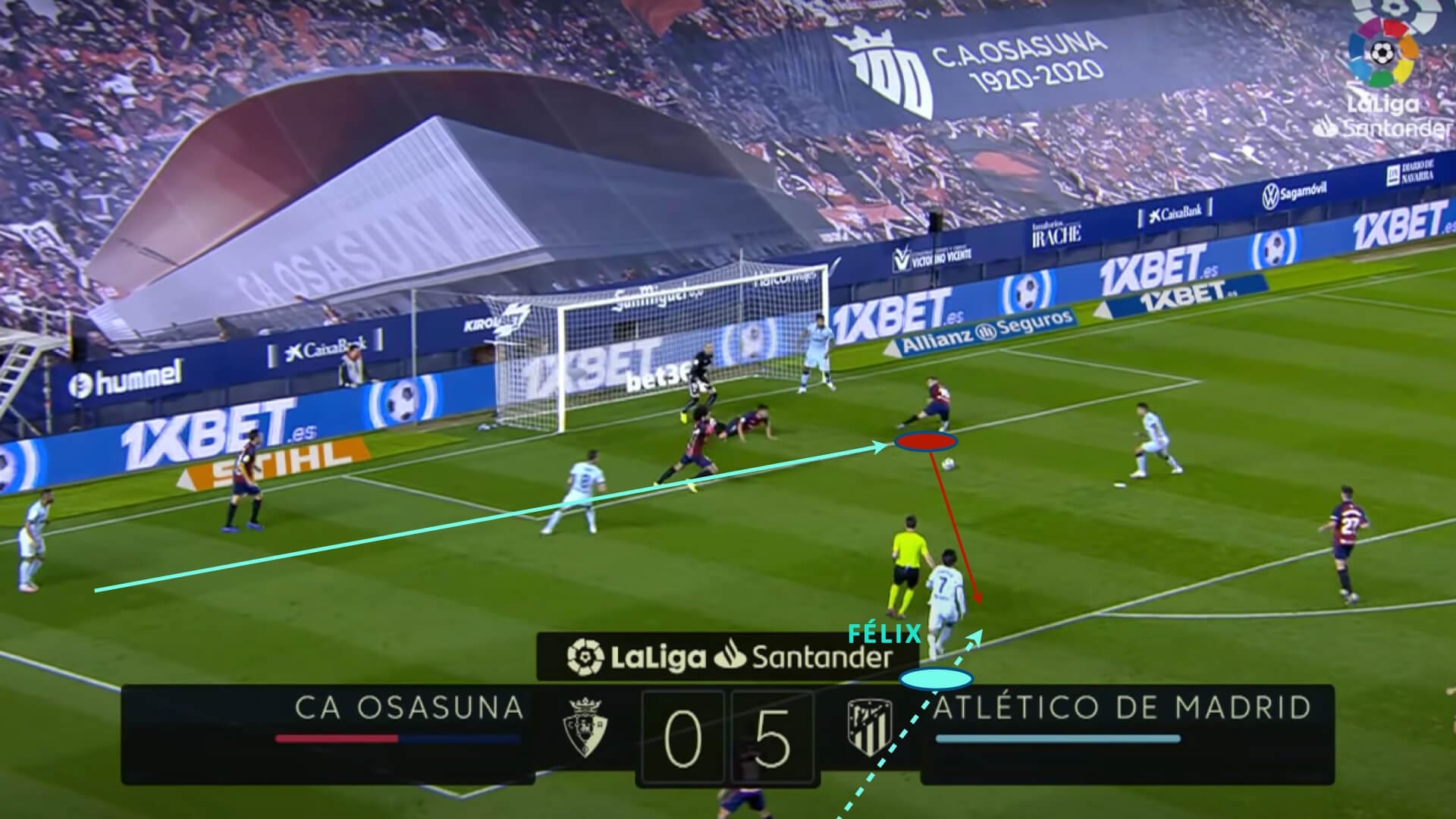
As a negative part of Félix’s positioning, his work rate is not very high, especially compared with what’s demanded from Simeone’s tactics.
As we said before in the analysis, he only makes short efforts and that also translates into the defensive phase.
He usually stays still after losing the ball and doesn’t try to counter-press or trackback.
He jogs or walks too much, and when he makes an effort to recover the ball, it’s usually too late, and the effort is worthless.
This is one aspect of the game in which he’s further away from Barcelona’s Antoine Griezmann, and he’ll need to improve that to become a truly complete player.
Below, there’s an example of this defensive behaviour.
Félix recovers his position by walking instead of running, leaving a player unmarked at the edge of the box.
Only when the player receives the ball does Félix sprint and tries to press him, but it’s too late, and he doesn’t recover the ball.
Had he made the same effort an instant before, he would have impeded that pass, and the effort would have been much more effective.
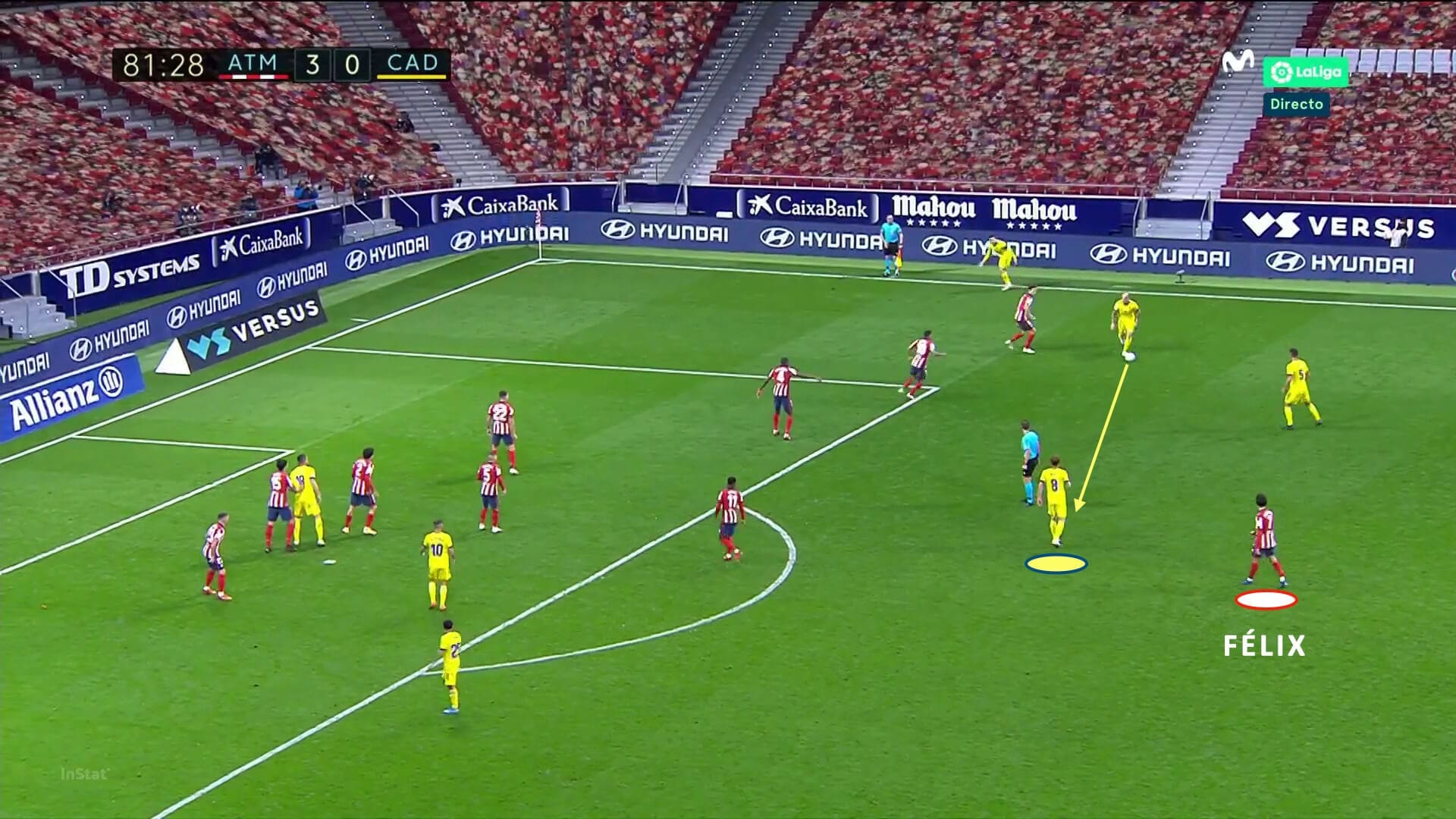
Progression and final product
As we stated in the first part of this scout report, Félix is a technically gifted player with a fantastic and very delicate first touch, both when controlling and passing the ball.
He’s very skilled in tight pockets of space, capable of turning and leaving players behind with few touches.
All these traits, combined with his coordination, make Félix a very elegant and aesthetically-pleasing footballer.
With his technical ability, Félix is very effective when playing between the lines, even against compact teams.
His first-touch combinations are excellent, and he can play quick one-twos, making the rivals run without ever reaching the ball.
He scans his surroundings very well and makes lots of backheel passes, taking defenders off guard and progressing quickly in difficult situations.
With the appropriate partners, Félix can move the ball very quickly towards the goal and accelerate any attacking play.
In the example below, Félix receives the ball surrounded by four French players.
Without turning and with only one touch, Félix plays a backheel pass into his teammate’s run, creating a scoring chance.
This action requires not only the technical ability to make the pass but also the awareness, vision, and confidence to do it so quickly and in a very tight space.
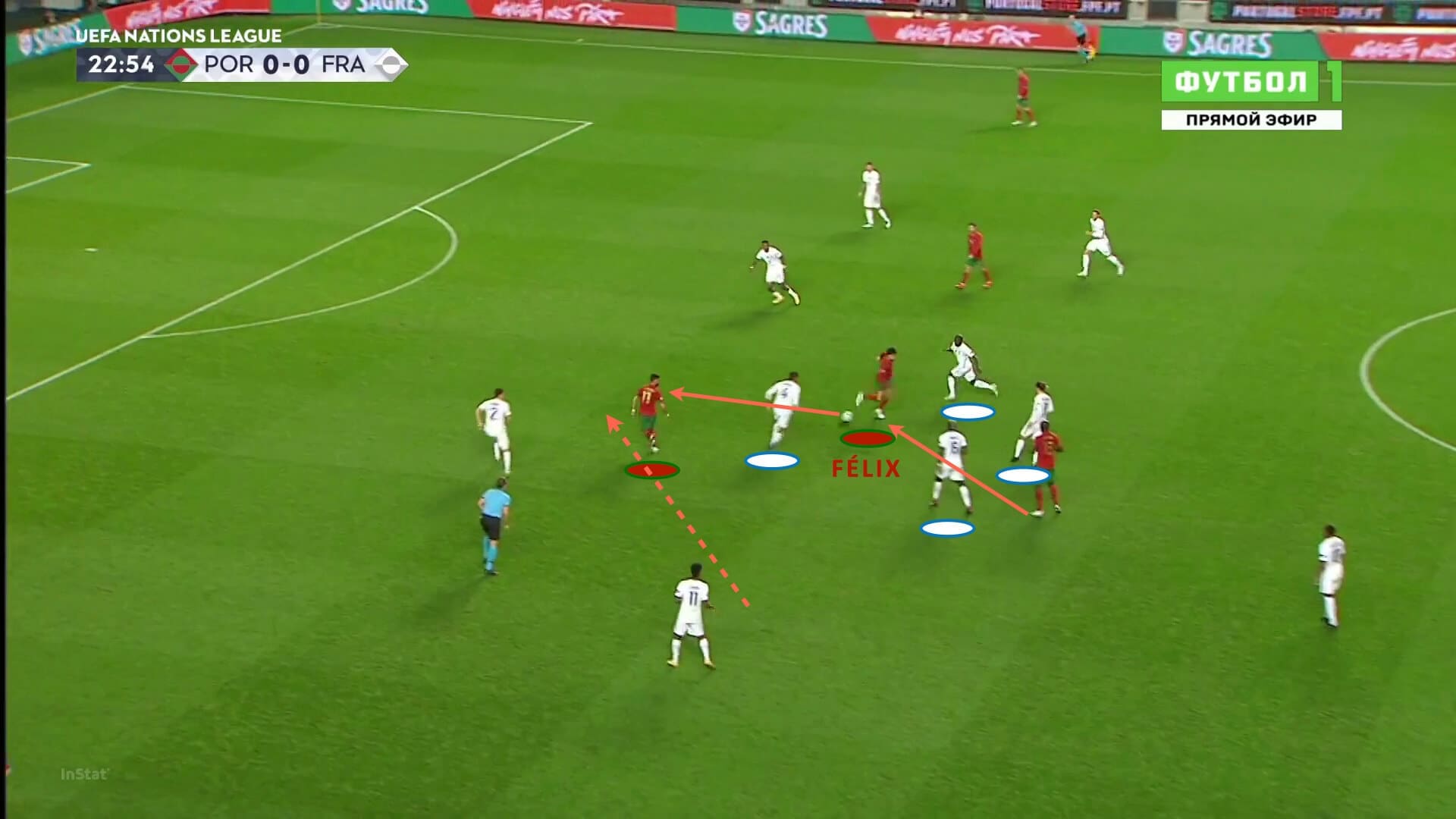
Félix also chooses very smartly the exact moment to pass the ball, attracting rivals and making the pass when his teammate is in the best position.
He can also do this while running with the ball, which forces rivals to decide between letting him advance or leaving his teammates unmarked.
Félix has the quality to assist and progress the ball both when he gets closer to the midfielders and when he receives around the box.
He averages 0.13 xA per 90 in the last year, increasing it to 0.2 in La Liga so far.
His progressive passing stats are also impressive, with 4.18 per 90 in the last 365 days and 5.83 in La Liga so far.
This last figure makes him the eighth-best progressive passer between La Liga attacking players this season.
Below, we can see his progressive actions in the last year.
Félix shows a good combination of long progressive runs, mostly in counterattacks and quick transitions, and progressive passes, usually from the left side and very vertical and aggressive.
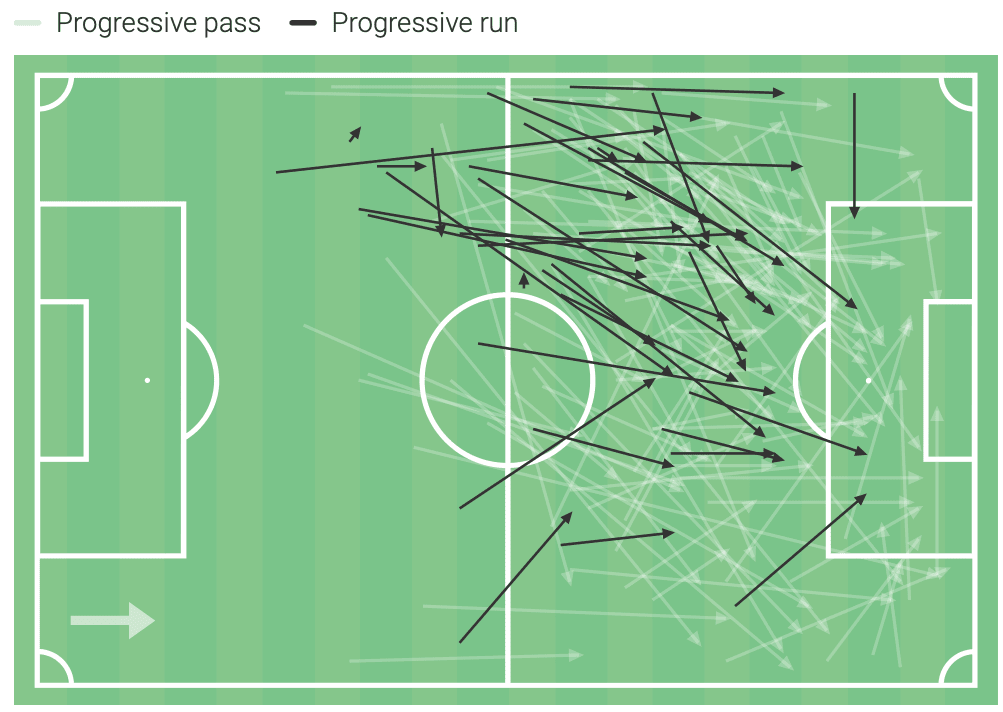
With this skill set, Félix is a very useful player in counterattacks.
He has the pace and ability to drive the ball forward when he finds spaces (2.3 progressive runs per 90 so far in La Liga), the quality to launch counterattacks, and also the instinct to finish them.
As the counterattack actions map below shows, he’s very complete in this part of the game.
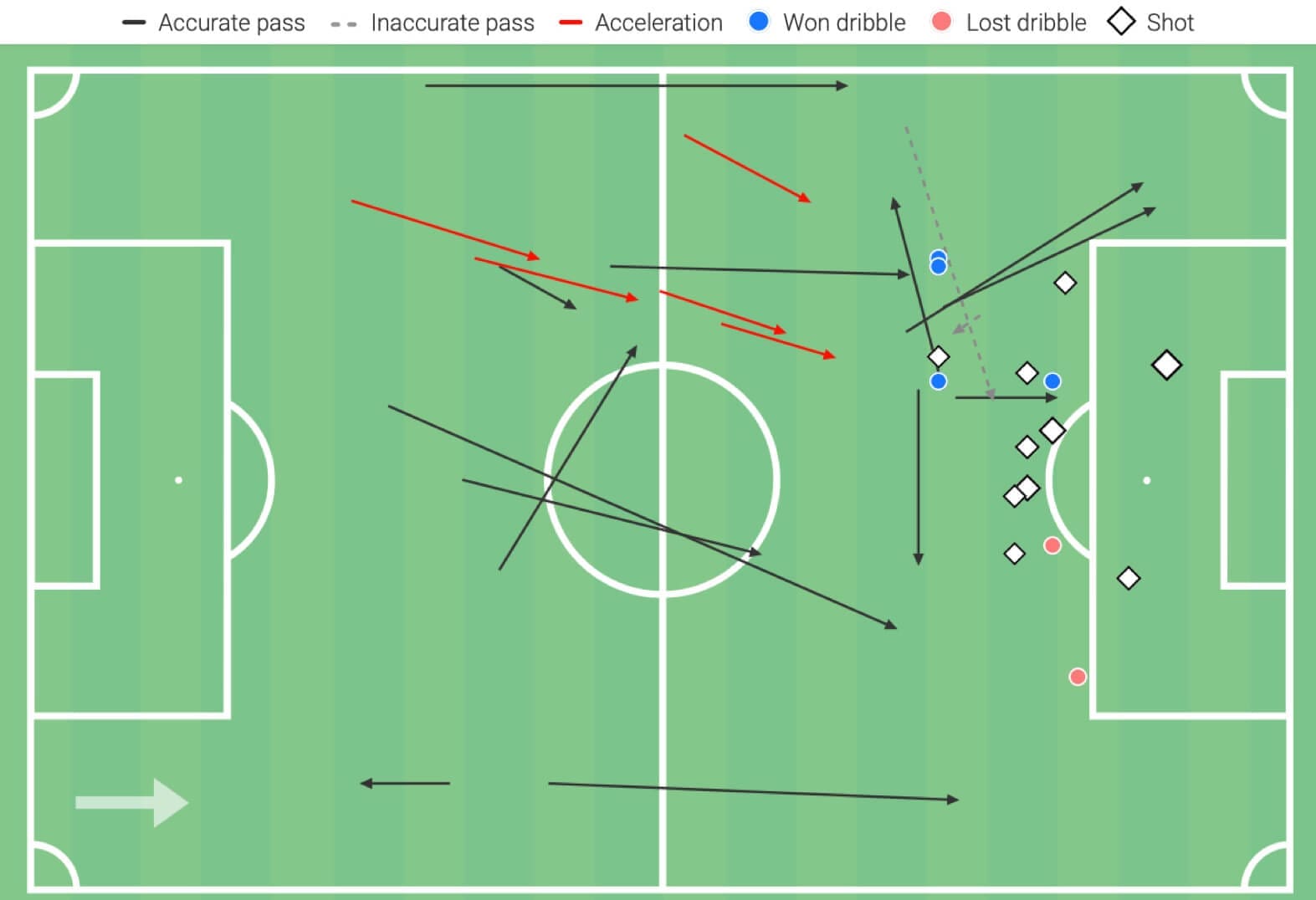
Now, let’s see some examples of Félix’s progressive and chance-creating actions.
In the first one below, Félix comes very deep to receive the ball, and he spots the run of Correa, his attacking partner.
Félix has the quality and vision to make a long pass over the defensive line and create a chance from midfield.
With runs in front of him, Félix can create lots of chances.
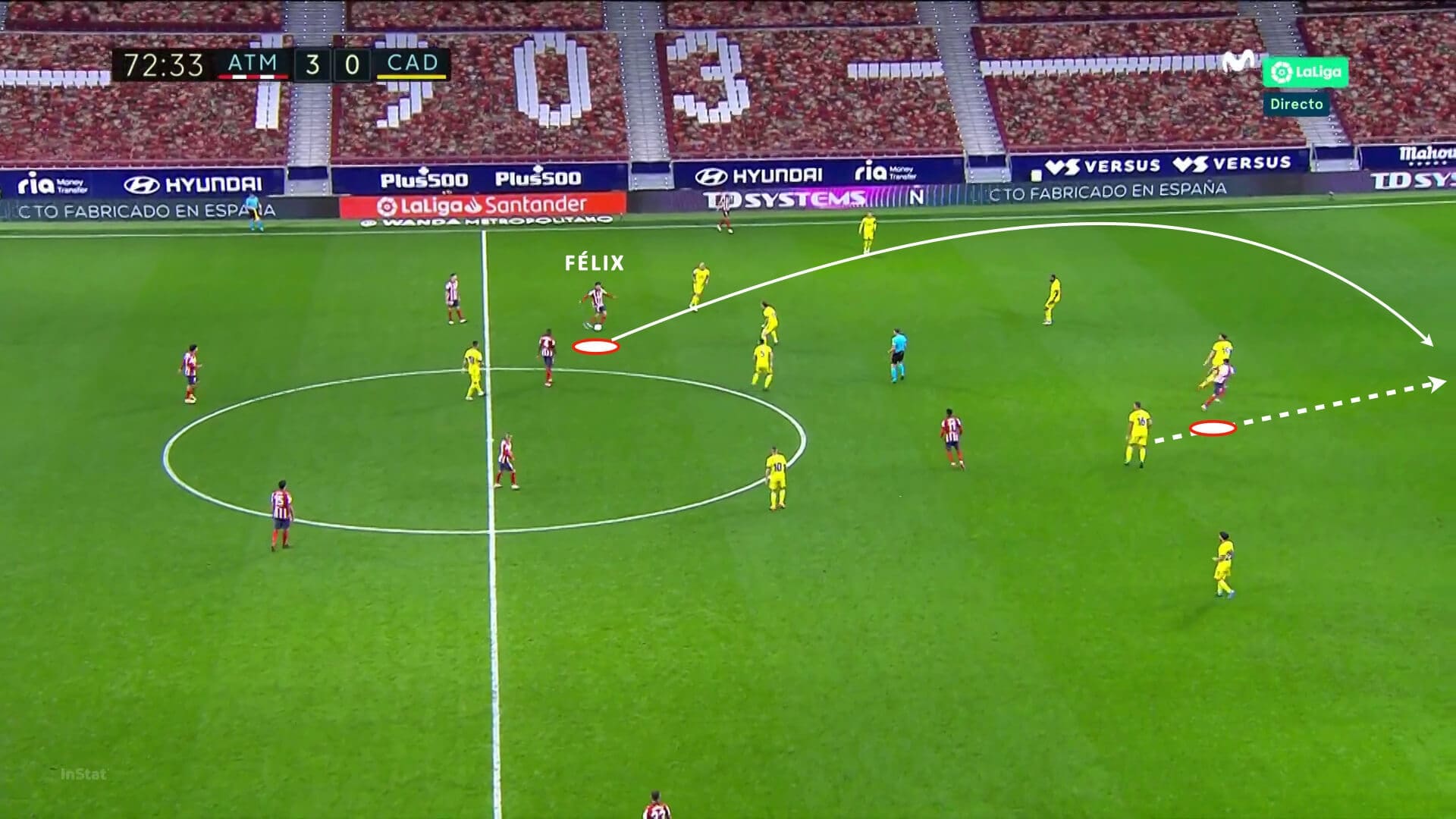
Here, Félix receives the ball again between the lines and is surrounded by rivals, but before they can press him, he plays a first-touch backheel pass to a more advanced teammate.
After the pass, Félix makes a short run to receive the ball back and continue progressing.
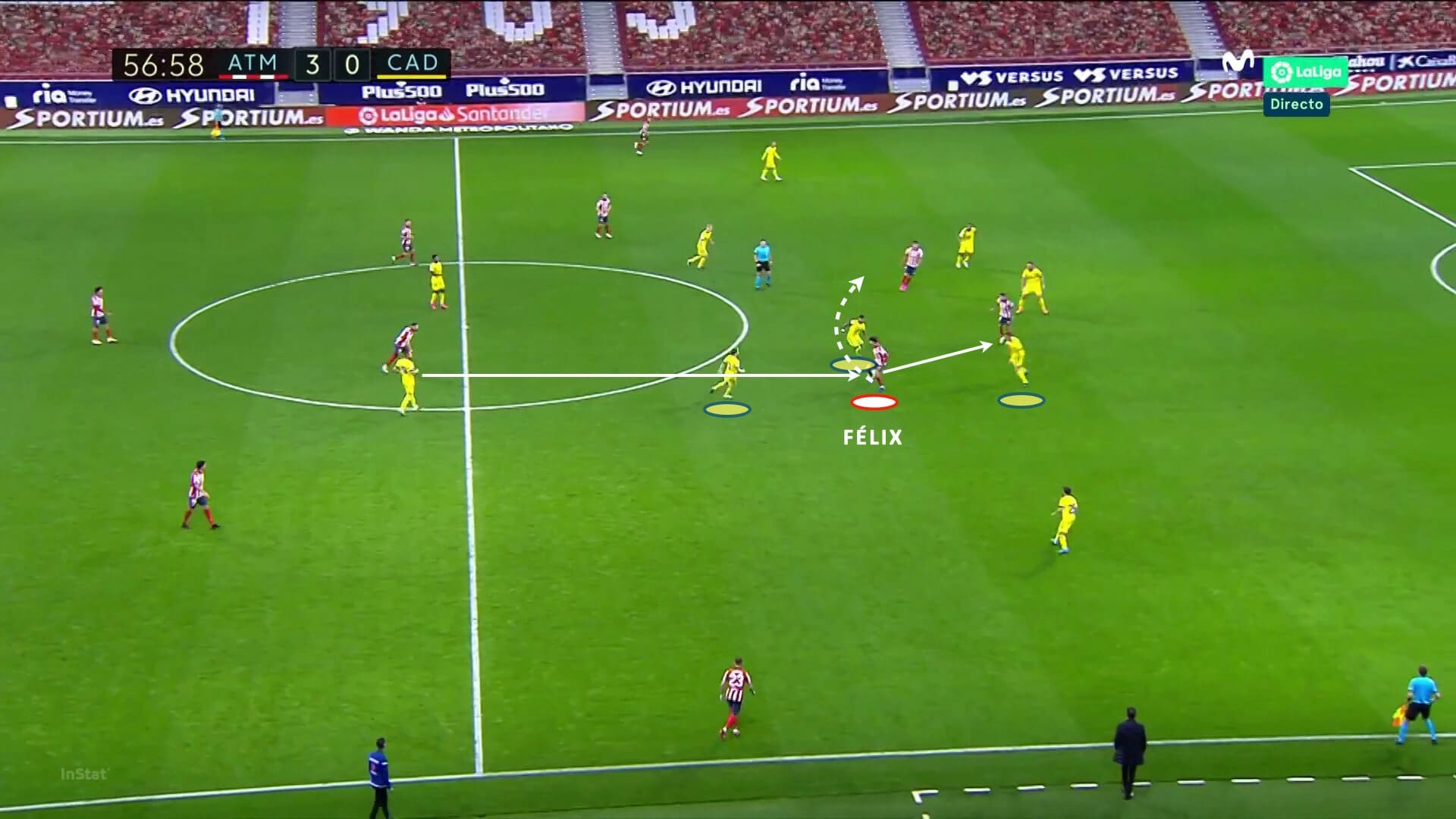
Finally, in this last example, Félix is driving the ball toward the defensive line.
Once he attracts three players who are blocking the most direct way forward, he makes a no-look pass to a free teammate.
After the pass, Félix attacks the box.
The most exciting aspects of this play are Félix’s intelligence in choosing the exact moment to pass the ball and his ability to hide the pass until the last second.
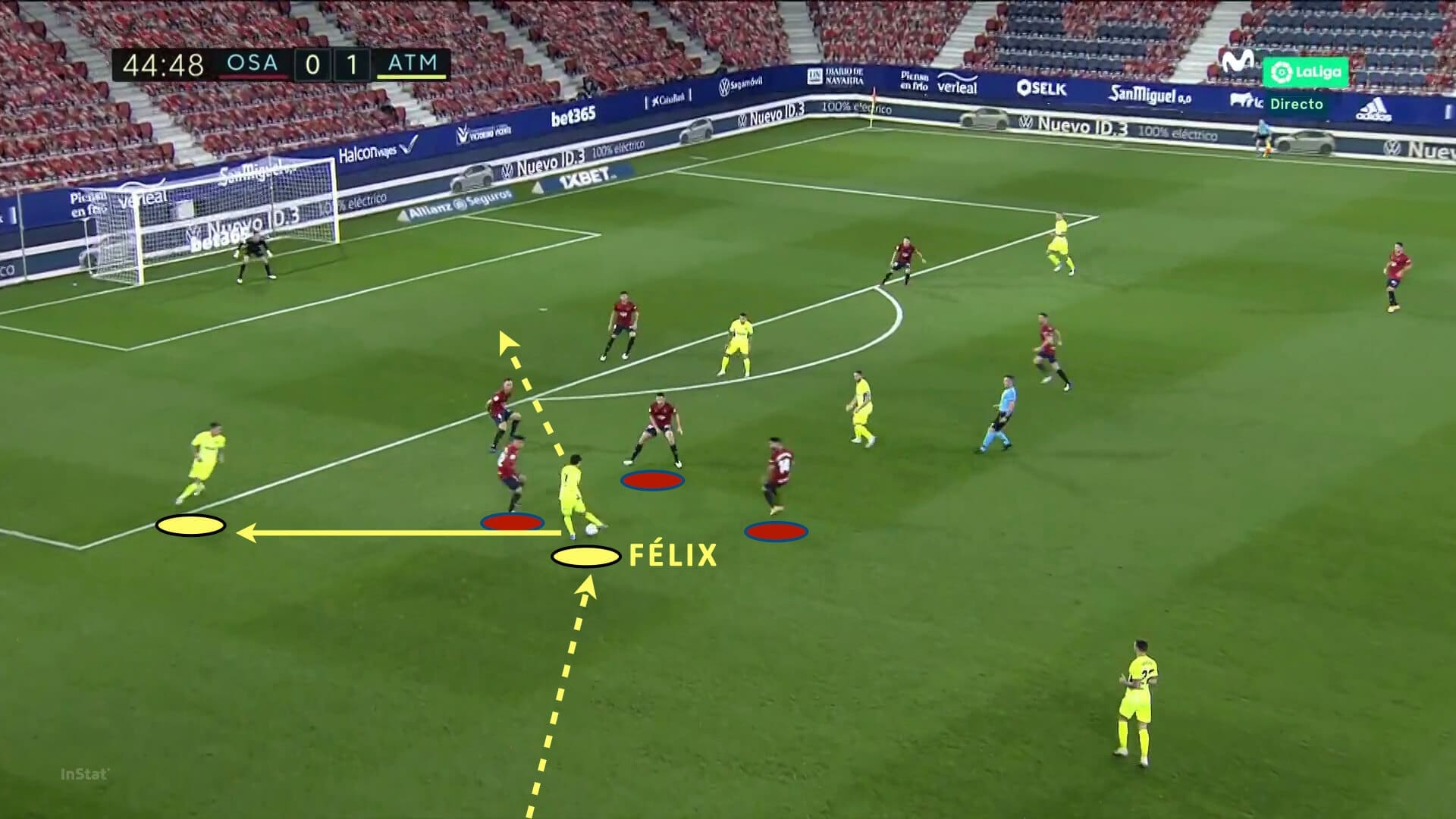
Even if he’s not the strongest, Félix uses his body well to protect the ball, turn and generate fouls.
He has the ability in 1v1 situations, especially in tight spaces where he doesn’t need to be very fast.
His dribbling always makes sense, and he is very dangerous around the box, shooting after lots of his dribbles.
Below we can see Félix’s dribbles in the final third in the last year.
He usually dribbles from the left, and when he does it in central areas, he often creates a shooting action afterwards.
This again hints at a good division-making from the Portuguese forward.
When he dribbles and risks the ball in central positions, it’s usually because he knows there’s a potential goalscoring opportunity as a reward.
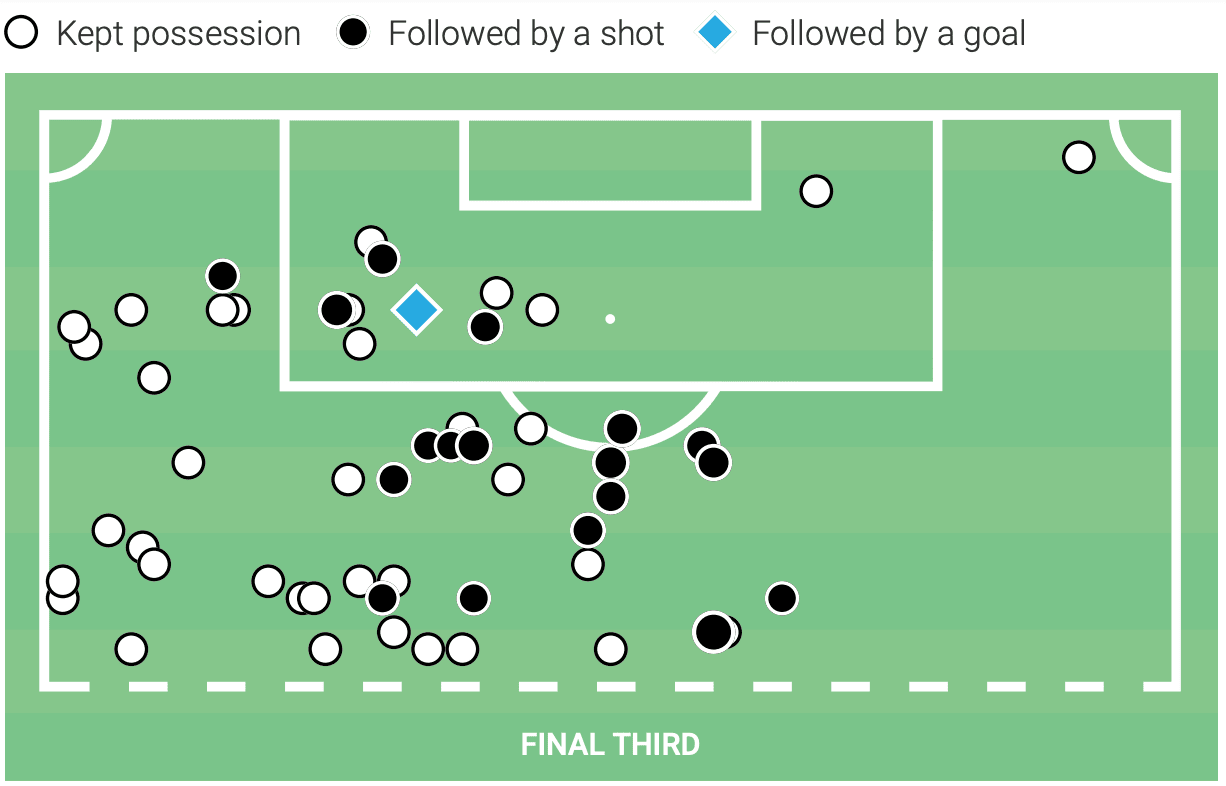
The most important thing about all these characteristics in Félix’s game is that he manages to turn them into goals.
At the time of this writing, Félix is the joint-top goalscorer in La Liga with five goals from 2.98 xG. In the last year, he has scored 15 goals from 15.33 xG.
Last year, his finishing wasn’t very reliable and consistent, but he’s been improving, and he has started the current season in fantastic form.
Given his age, it isn’t too worrying that he’s slightly underperforming his xG and he has the time to turn that around.
Conclusion
Félix is slowly but steadily becoming the player Atlético expected when they paid 126 million euros for him in 2019 to replace Griezmann.
Paying such a high amount for a teenager with no experience in European top leagues was a huge risk at the moment, but Félix’s quality and adaptation seem to be starting to pay off that gamble.
Some obvious traits make Félix an excellent long-term replacement for Griezmann: his ability to combine and improve every play he’s involved in, his goalscoring ability, and his quality in the final third are some of them.
But Félix isn’t Griezmann and he has his own playing style that could make him an even better player if he keeps up with his development.
He has started the season very well, and if he continues in his current form, Atlético will have found its starting player for the years to come.





Comments